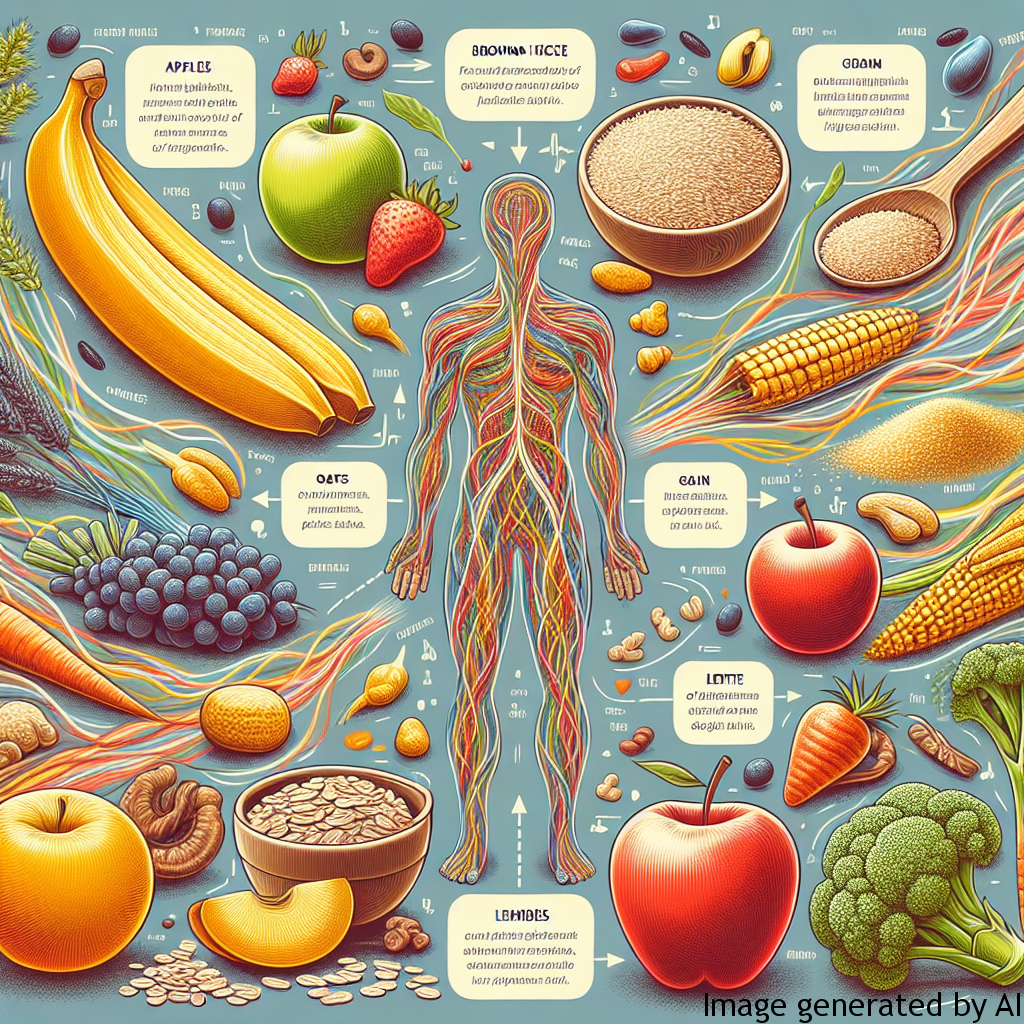Introduction
Fiber is an essential part of our diet that plays a fundamental role in maintaining not only digestive health but overall wellness. Fiber-rich foods, like fruits, vegetables, legumes, and whole grains, are staples in a nutritious diet. They provide numerous health benefits, including lowering the risk of heart disease, obesity, and type 2 diabetes. This article aims to shed light on fiber-rich foods, their health benefits, and the importance of incorporating them into our daily meals.
Description of Fiber-Rich Foods
What are Fiber-Rich Foods?
Fiber-rich foods are plant-based foods that contain a significant amount of dietary fiber. Dietary fiber, also known as roughage or bulk, is a type of carbohydrate that cannot be broken down and absorbed by our bodies. There are two types of dietary fiber: soluble and insoluble. Soluble fiber can be dissolved in water and helps lower blood cholesterol and glucose levels. In contrast, insoluble fiber doesn’t dissolve in water and aids in moving food through your digestive system.
The Importance of Fiber in Nutrition
Fiber plays multiple roles in nutrition. It adds bulk to the diet, helping to keep us feeling full and more satisfied with our meals. This is particularly beneficial for those trying to manage or lose weight. Furthermore, fiber aids in digestion by softening stool, making it easier to pass. This can prevent constipation and promote regular bowel movements. One cannot overlook its role in regulating blood sugar levels and lowering cholesterol, which leads to significant reduction in the risks of heart disease and diabetes.
Examples of Fiber-Rich Foods
Many foods are naturally rich in fiber. Fruits, vegetables, whole grains, legumes, nuts, and seeds are among the top fiber-rich foods. Here are some examples:
- Fruits: Pears, berries, apples, and bananas.
- Vegetables: Broccoli, carrots, and Brussels sprouts.
- Grains: Whole Wheat, brown rice, and Oats.
- Legumes: Lentils, kidney beans, and chickpeas.
- Nuts and Seeds: Almonds, peanuts, and flax seeds.
Tips to Increase Fiber in Your Diet
Adding more fiber to your diet can be a simple and effective way to improve your health. Here are some tips:
- Eat whole fruits instead of drinking fruit juices. When juiced, fruits lose much of their fiber content.
- Incorporate vegetables into meals as much as possible. They can be added to just about anything – in soups, pasta, rice dishes, or salads.
- Choose whole grain products over refined ones.
- Substitute meat with legumes in some meals.
- Include nuts and seeds in your diet – they make a great snack and can also be added to salads and other dishes.
Conclusion
Fiber-rich foods are an integral part of a healthy diet. They provide numerous health benefits – from helping maintain a healthy weight to lowering the risk of heart disease and diabetes. Despite the known benefits, many of us don’t get enough fiber in our diets. All it takes is some easy adjustments to our eating habits to meet the recommended daily fiber intake and enjoy the health benefits that come along with it.

